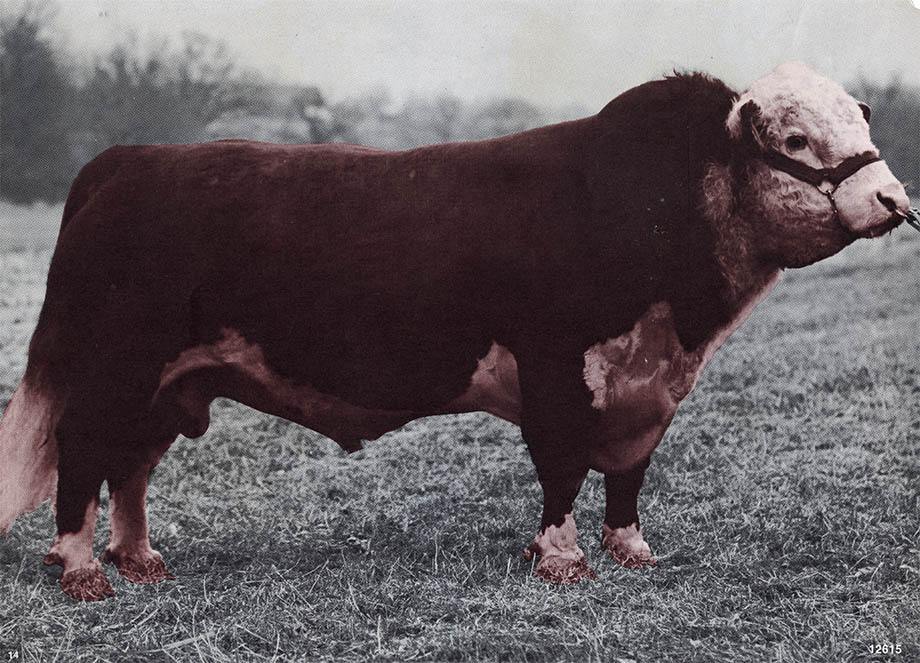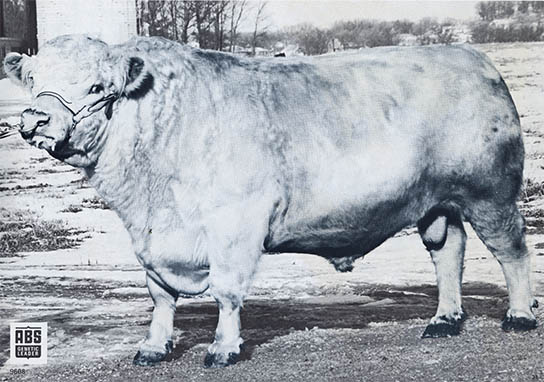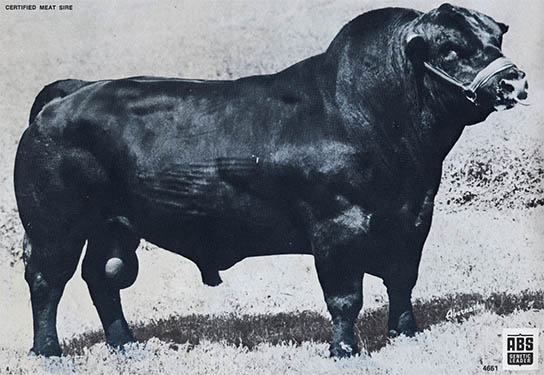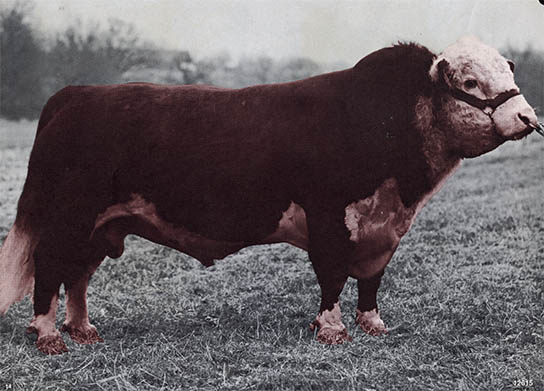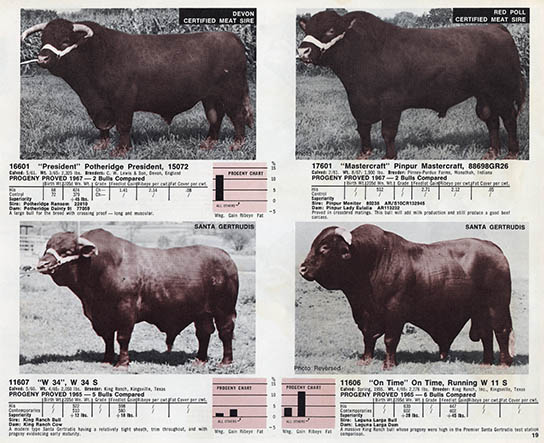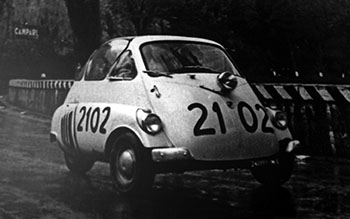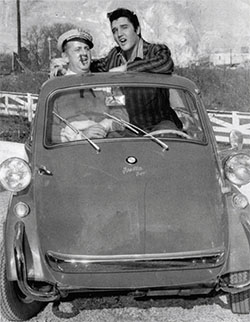96
Canyon 32
The Agricultural Trade Catalog
This spot-color offset of a photograph of the Hereford beef sire Canyon 32 (ABS No. 6641) was featured on page 10 of the Nov 1967 American Breeders Service, Inc. Beef Sire directory (AKA catalog). IYI, here are his technical specs:

As should now be apparent, ABS wasn't advertising the bull for sale, but rather his breeding ability.
So, yeah, this post is about bull semen. You're more than welcome.1
American Breeding Services (ABS) was founded by John Rockefeller (Rock) Prentice in 1941.
If there is such a thing as a high road in beef and dairy cattle artificial insemination then Rock took it. Unlike his nefarious competitors,
he sold only semen from "progeny-tested" sires.
The watershed moment for the company occurred on 29 May 1953, when their first calf, appropriately named "Frosty," was born from semen flash-frozen by ABS staff. Stunned by this breakthrough, Rock immediately invested in extensive liquid-nitrogen cryopreservation R & D and, with Union Carbide's Linde division, developed a small Dewar-type flask that could preserve frozen semen and yet still be used in the field by local inseminators.
It was the most patentable thing imaginable in the burgeoning AI field, yet Rock gave it to the industry as a gift. As I already said – the high road. Finally, in failing health, Rock sold the company to W.R. Grace in 1967 and today ABS Global, still headquartered in DeForest, Wisconsin has subsidiaries in 14 countries and ships semen
to more than 70 countries. You have to admit, there is a certain charm to these 3-color illustrations.
It's true that they weren't 4-color images, but that really wasn't necessary. For every 4-color Sears Wishbook there were 100s of catalogs just like this,
advertising not what a farmer's family wanted, but what they needed. 1. TMI time: The current workflow for beef and dairy AI goes something like this: the bull is mounted on a teaser cow and ejaculates into an warm-water jacketed rubber tube (the artificial
vagina). The collected semen is then mixed with extenders, including egg yolk or pasteurized milk, as well as preservatives and antibiotics. The final product is packaged in 0.25-0.5 mL "straws"
which are flash-frozen in liquid nitrogen (-320°F), Properly frozen straws are viable nearly indefinitely. Dams are inseminated by warming the straws then placing them into a gun which is guided into the cervix using the common
rectrovaginal technique (which, trust me, once you learn you can't unlearn), with most success occuring at or after midestrus.
For more detail see the Penn State Extension's Reviewing Artificial Insemination Technique.
For a complete supplier of AI equiptment, assuming you want to do this yourself at home, see the Verona, WS-based
Minitube. If for some reason you read this far hoping for details of human AI (now termed assisted reproduction), see the PBSmed's online
catalog (a pdf) for specifics. 2. For comparison the 2011 Smart FourTwo is 2.69(l) × 1.56(w) × 1.54m(h), i.e., larger in every dimension then the Isetta. 3. True Story: Your humble narrator’s aunt had a baby blue Isetta, purchased by her Dad, to tool around the campus of Indiana University ca.1960. I remember asking
her once how many college students could fit in the car - like two, maybe three? She said, no, we managed alot more than that! The most famous American owner of an Isetta, however, was not my Aunt but
Elvis who bought a red 300 as a Christmas gift for Col. Parker. This publicity photo is from 21 Dec 1957: 26 Jun 2011 ‧ Design
